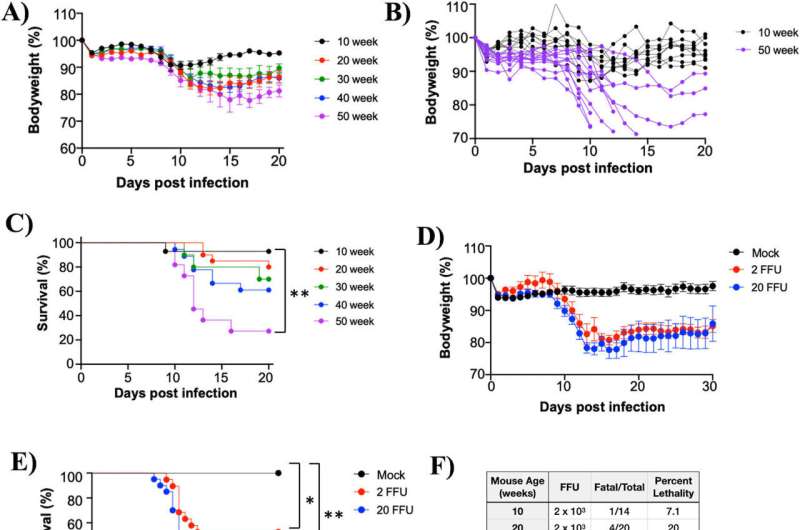This article has been reviewed according to Science X's editorial process and policies. Editors have highlighted the following attributes while ensuring the content's credibility:
fact-checked
peer-reviewed publication
trusted source
proofread
Investigating the dangerous neurological effects of the Powassan virus

While Lyme disease is the most recognized and prevalent tick-borne disease in the United States, other infections transmitted through tick bites can be equally or even more dangerous. One of these is the Powassan virus (POWV). Erich Mackow, Ph.D., a virologist at Stony Brook University, is conducting research in an attempt to uncover one the most dangerous effects of POWV—neurologic damage.
Powassan virus is endemic to North America. It is present in about 2% of Long Island ticks and is injected into the skin during just a 15-minute tick bite. POWV infected patients have a 10% risk of fatal encephalitis and up to 50% of infected patients have long-term neurologic damage. Severe neurologic symptoms are associated with POWV infection in older patients.
Mackow is a Professor in the Department of Microbiology and Immunology in the Renaissance School of Medicine (RSOM), a core member of Stony Brook's Center for Infectious Diseases , and among a number of scientists at Stony Brook University investigating ways to better target treatments of tick-borne infections. Stony Brook Medicine has a clinic dedicated to treating Lyme disease and all tick-borne infections, such as POWV, and is home to the Regional Tick-Borne Disease Resource Center.
"The severity of Powassan encephalitis in the elderly remains an enigma as the mechanisms of the viral neuroinvasion remain virtually unknown," says Mackow.
For this research, Mackow and his RSOM colleagues focus their investigation on analyzing all aspects of the neurological effects of POWV, defining viral proteins that direct neurovirulence, developing therapeutics and attenuated POWV vaccines, and assessing the role of cell senescence, the biological process when cells stop dividing, as an age-dependent cause of POWV encephalitis.
The team isolated a Powassan virus strain (L19) from ticks on Long Island and developed an animal model of POWV induced encephalitis and age-dependent lethality. They established a mechanism for genetically altering POWV, and generated attenuated viral mutants that as vaccine candidates fail to cause disease and elicit protective immune responses.
Vaccines and therapeutic approaches for preventing POWV neuroinvasion are now being examined by the researchers and the role of age in the severity of POWV infection revealed.
"Our findings provide a foundational basis to understanding the mechanism of neurovirulent pathogens in the central nervous system, define the role of brain senescence in disease severity, and the potential to use responses that protect young mice from POWV lethality to develop targeted human therapeutics that protect the elderly from lethal POWV infections," explains Mackow.
The investigators detail their discovery based on the age-dependent model and novel POWV genetics in a new paper published this month in the Journal of Virology.
The authors write that their laboratory results establish the age-dependent lethality of POWV in a murine model that mirrors human POWV severity and long-term central nervous system pathology in the elderly.
Mackow, the lead author, said that only minimal infectious doses of the virus were highly lethal in older mice and that lethality increased >10-fold with age. The researchers also determined that POWV lethality is linked to central nervous system glial cell activation and age-dependent neuroinflammatory cytokine responses in the mice, essentially establishing mechanisms contributing to Powassan virus encephalitis.
More information: Megan C. Mladinich et al, Age-dependent Powassan virus lethality is linked to glial cell activation and divergent neuroinflammatory cytokine responses in a murine model, Journal of Virology (2024). DOI: 10.1128/jvi.00560-24
















